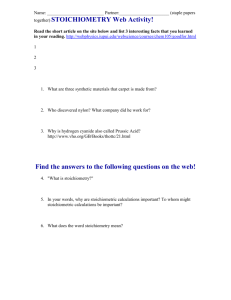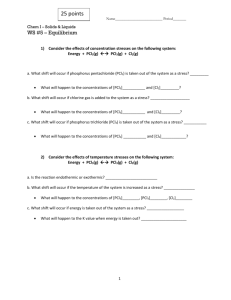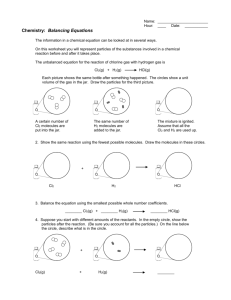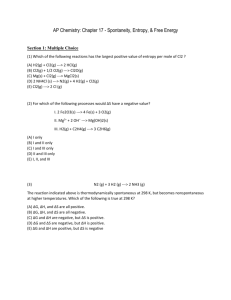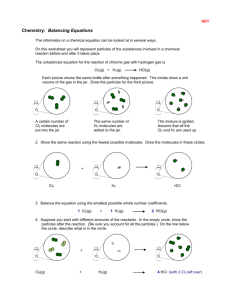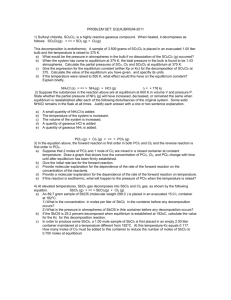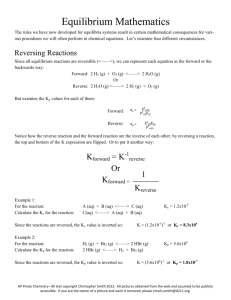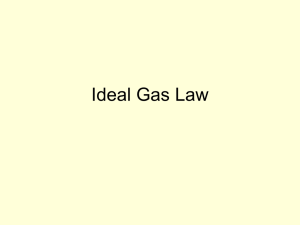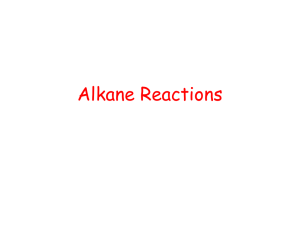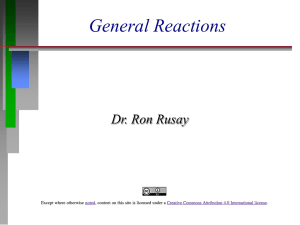Chemistry Problems Thermodynamics
advertisement
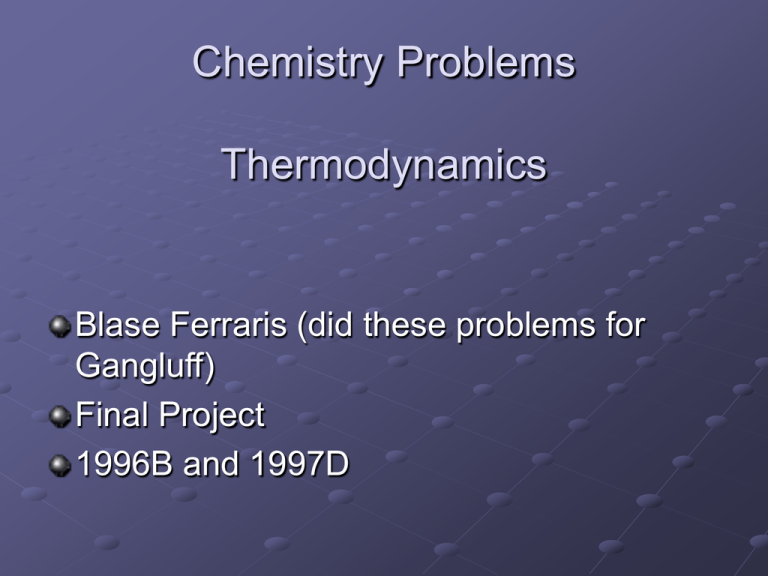
Chemistry Problems Thermodynamics Blase Ferraris (did these problems for Gangluff) Final Project 1996B and 1997D 1997 D PCl5(g) PCl3(g) + Cl2(g) What is the sign of ΔS for the reaction? Explain. What change, if any, will occur with ΔG for the reaction as the temperature is increased? Explain your reasoning in terms of thermodynamic principles. If He gas is added to the original reaction mixture at constant volume and temperature, what will happen to the partial pressure of Cl2? Explain. If the volume of the reaction mixture is decreased at constant temperature to half the original volume, what will happen to the number of moles of Cl2 in the reaction vessel? Explain. What is the sign of ΔS for the reaction? Explain. Entropy increase will be observed in a reaction in which there is an increase in the moles of gas in the product PCl5(g) PCl3(g) + Cl2(g) Moles products > moles reactants ΔS is positive What change, if any, will occur with ΔG for the reaction as the temperature is increased? Explain your reasoning in terms of thermodynamic principles. ΔG° = ΔH° - TΔS° Since ΔS° is positive, increasing T will result in a larger term being subtracted from ΔH°. Or ΔG°= -RTlnK as T increases, ΔG° gets more negative ΔG° will decrease If He gas is added to the original reaction mixture at constant volume and temperature, what will happen to the partial pressure of Cl2? Explain. Obviously, Helium is not a part of the overall reaction PCl5(g) PCl3(g) + Cl2(g) (where’s He? Exactly, NO WHERE) Therefore, adding Helium to the reaction wouldn’t affect anything in the reaction at all. *note* Remember, the partial pressure of Cl2 is its pressure in proportion to the other parts of the chemical equation. Since Helium is not a part of the equation, adding it will affect the overall pressure, but not Cl2’s partial pressure. It won’t tip the reaction in favor of the products or the reactants therefore the reaction itself will remain unaffected. If the volume of the reaction mixture is decreased at constant temperature to half the original volume, what will happen to the number of moles of Cl2 in the reaction vessel? Explain. Decrease in Volume leads to an increase in Pressure When pressure increases, the reaction shifts to side of the equation with lesser moles of gas. PCl5(g) PCl3(g) + Cl2(g) Moles Reactants < Moles Products Therefore PCl5 will increase and Cl2 will decrease MR GANGLUFF DANCING AT PROM
